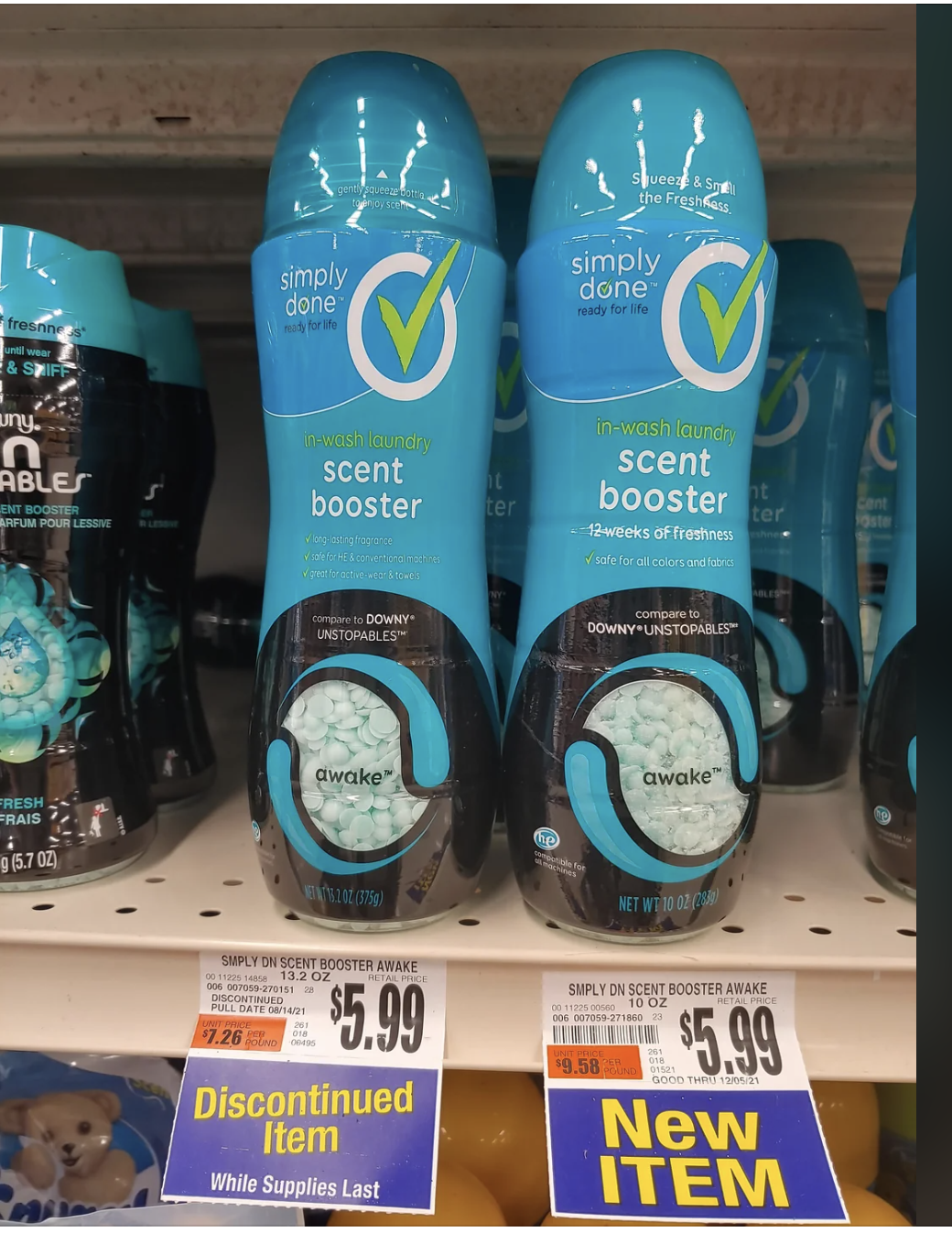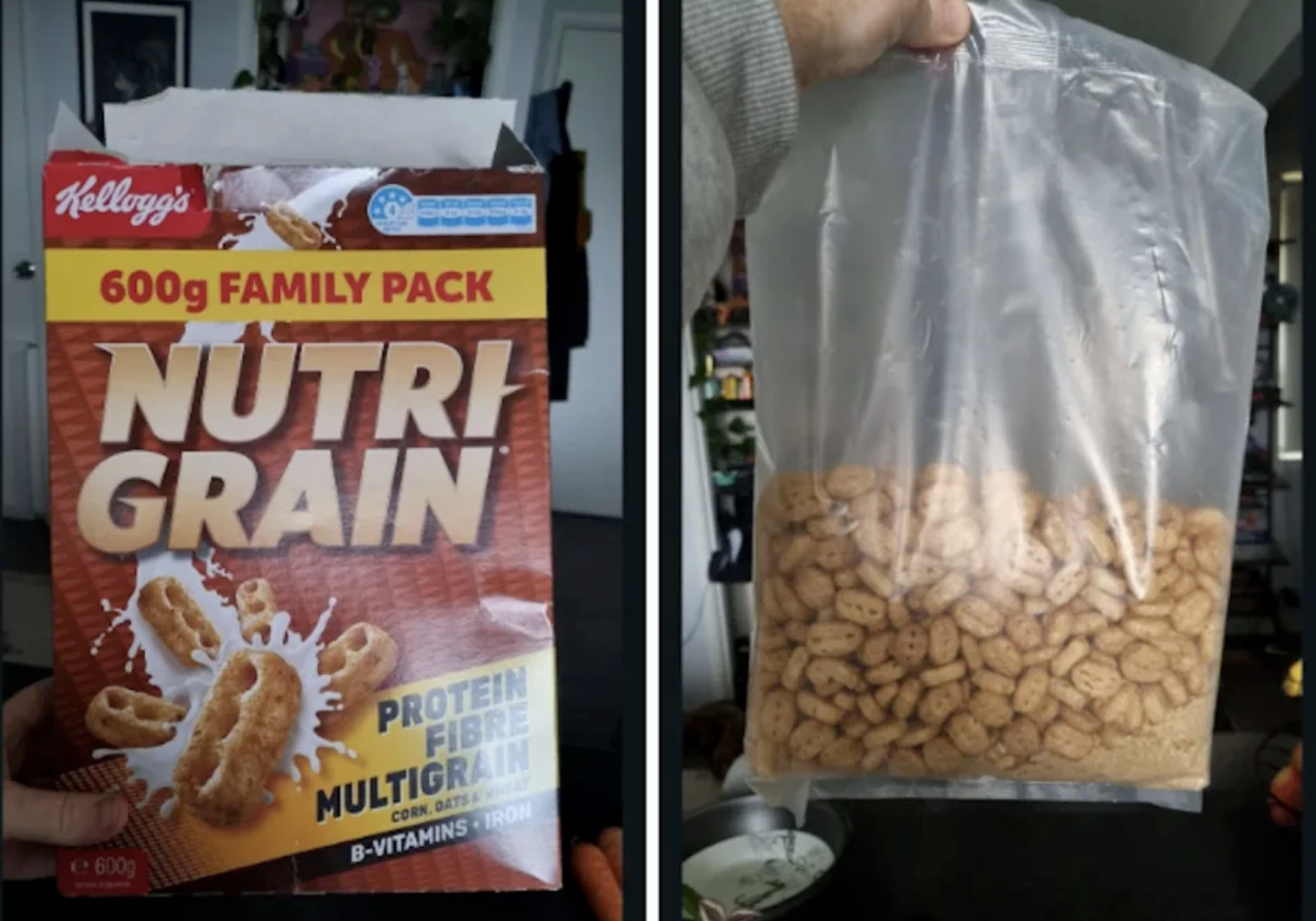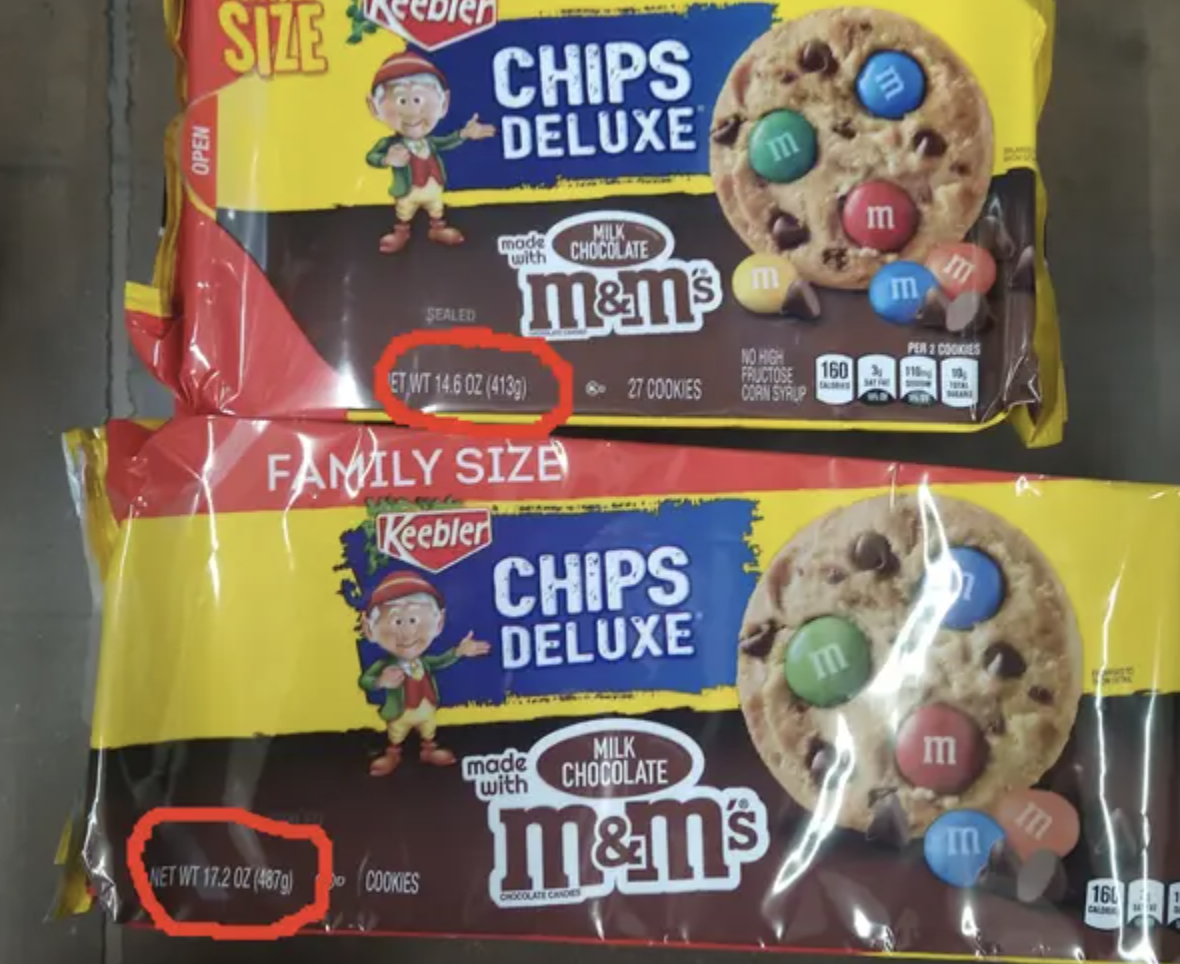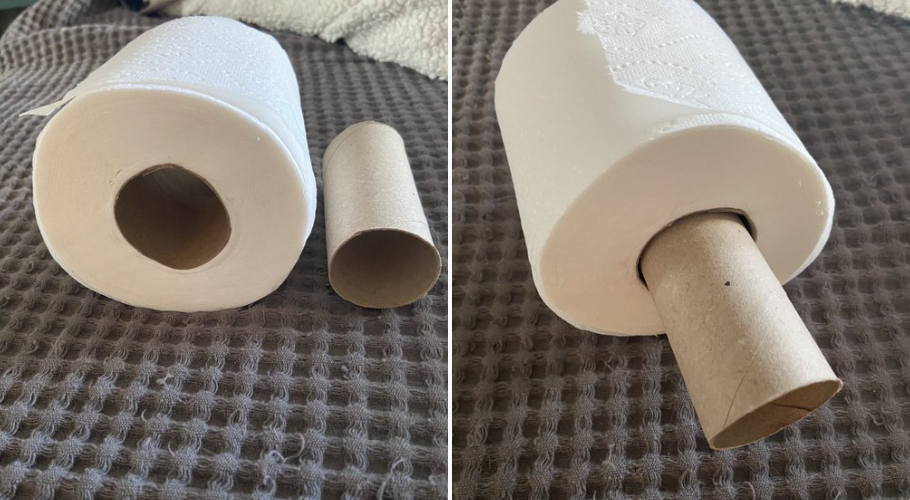
- calendar_month October 1, 2024
- folder Community Engagement
Sharing Tags
Budgeting Tips, Consumer Spending, Grocery Costs, Inflation Impact, JohnHart, JohnHart Real Estate, Nathan Derry, Nathan Derry JohnHart, Nathan Derry Real Estate, Nathan Derry Realty, Nathan Derry Recommends, Nathan Derry Tips, Nathan Derry, JohnHart Real Estate, Product Packaging, Rising Prices, Shopping Tips, Shrinkflation, Unit Pricing

You’ve probably noticed that your favorite bag of chips isn’t as full as it used to be, or maybe your cereal box seems a little lighter. No, you’re not imagining it, and it’s not some weird fluke of physics. Welcome to the world of shrinkflation, a stealthy tactic that’s slowly but surely impacting how we shop—and what’s left in our wallets.
What Is Shrinkflation?

Shrinkflation is what happens when companies reduce the size or quantity of a product while keeping the price the same. In some cases, they may even raise the price. It's the same packaging, same brand, but now you're getting less for your money.
Why do companies do this? In a word: costs. Everything from raw materials to labor has become more expensive. Instead of hiking prices outright and risking consumer backlash, brands reduce product sizes to maintain profitability without appearing to charge more. Sneaky, right?
How Is Shrinkflation Affecting Our Shopping Habits?

Shrinkflation plays with perception. You might think you're paying the same price, but when the product has less inside, you're really getting hit with a hidden price increase. For example, that toilet paper roll? It’s getting smaller. The candy bar? Losing ounces. It’s a psychological game that brands hope you won’t notice—but savvy shoppers are catching on.
Consumers are starting to compare products more closely. Unit prices (the price per ounce, pound, or item) are becoming more critical to understanding value. As a result, people may shift their buying habits, opting for generic or bulk brands that offer better value for their dollar. However, not every product has an obvious alternative, leaving shoppers with fewer options but to grin and bear it.
Shrinkflation and Your Bottom Line

You might not notice the missing ounce of cereal or fewer sheets of toilet paper right away, but over time, those small reductions add up. The bottom line is this: you’re paying more for less. Whether it’s groceries, household items, or even restaurant portions, shrinkflation quietly eats into your budget.
From a real estate perspective (yes, we have to go there), the rising costs of everyday goods can impact larger financial decisions. If you're spending more on essentials, that's less money available for saving toward a down payment or investing in home improvements. It’s a chain reaction—smaller products, higher costs, tighter budgets.
How to Outsmart Shrinkflation
-
Pay Attention to Unit Prices: Most stores list the unit price on the shelf label. This is the real cost per ounce or item, allowing you to compare products more fairly.
-
Buy in Bulk (When It Makes Sense): Warehouse clubs or larger-size products can sometimes offer a better deal, especially if you're buying non-perishable goods.
-
Try Generic Brands: Many store brands offer comparable quality to name brands, often without the sneaky shrinkflation tactics.
-
Check Packaging Claims: Just because the packaging says "new and improved" doesn’t mean it’s better for your wallet. Take a close look at the actual amount inside.
The Bottom Line on Shrinkflation

While shrinkflation isn’t new, it’s becoming more prevalent as companies grapple with inflation and rising production costs. As consumers, it’s essential to stay informed and adapt our shopping strategies to avoid losing out. Though we can’t control how companies price their products, we can control how we respond—and where we spend our hard-earned money.
So, next time you’re at the store, keep an eye on what you’re really paying for, because in a world of shrinking products, your budget doesn't have to shrink with them.
I'm Nathan Derry with JohnHart Real Estate. As we navigate through the rising costs of everyday goods, I'm here to help you make informed decisions about your biggest investment—your home. Whether you're buying, selling, or just need advice, let's chat!
All the best,
Nathan Derry, Realtor

📍JohnHart Real Estate
📞(424) 303-0440
📧 nathan@jhagents.com
👨🏽💻 itsnathanderry.com
You deserve the opportunity to work with an ethical agent. Please give me a call today and let’s discuss your unique needs.
Interested in seeing a property or one of my off market properties in person? Contact me today! Who you hire matters!!!
Ready to make the best move of your life… let’s chat today!
